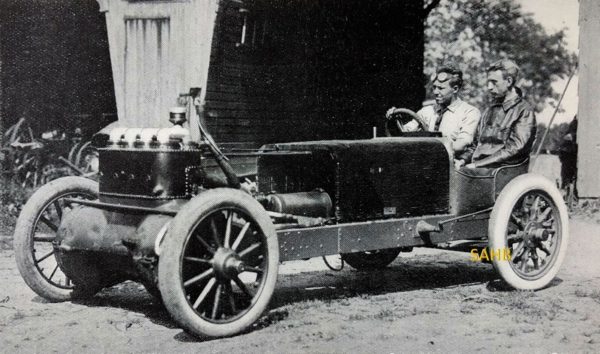
There are brave and eccentric designers of racing cars, others who create unique solutions for road cars, and some whose innovations are in the field of commercial vehicles. J. Water Christie was all three.
John Walter Christie was born in New Jersey in 1865. Around 1900, he set up the Christie Iron Works. Fascinated by the new horseless carriages, he designed his first car soon after: his first machine was reported in the press early in 1904. Christie applied in 1904 for a US patent for a front-wheel-drive design with a transversely mounted engine and independent sliding-pillar front suspension; neither of these was a first, but the unique Christie feature was the direct drive from the engine to the front wheels. The car had a novel transmission and clutch system, in which the engine crankcase effectively became the front axle and the support for the front springs.
Christie sometimes called his idea the “Direct Drive System”. In top gear, the crankshaft was connected directly to the front wheels, through a clutch on each end of the crankshaft. This was before the days of the constant-velocity joint, but the design seemed to work. It had one significant advantage: no loss of power through transmission and final drive, thus saving perhaps 20% of the engine’s lost output. There was, however, a serious drawback: direct drive limited the rpm of the engine to that of the front wheels, and Christie was forced to increase engine capacity to give the power he needed. His largest engines displaced over 20 litres.
His first car was a road vehicle, but he soon went racing to promote his invention; the first racing car appeared in 1904. With the engine rotating at only 420 rpm at 50 mph, Christie’s use of automatic inlet valves (opened by suction as the piston descended) was reasonably efficient. Peugeot had found in dynamometer tests in 1903 that the system worked well up to about 1,000 rpm. To maximise power, Christie added as many valves as possible: in 1904, his four-cylinder engine had 36, 32 of them overhead intake valves.
On January 21, 1905, Christie appeared with another new car at the annual Ormond-Daytona Beach races. After some unsuccessful attempts to increase output by adding a second engine at the rear, he returned to front-wheel-drive for the 1905 Vanderbilt Cup Elimination Race. The car finished sixth in the Elimination race and was selected to run in the Cup race on October 14th, with the car shown in our Snapshot. The race was a disaster for Christie: the evening before the start, Christie over-revved the engine, broke a connecting rod and worked all night to repair it, but on the fourth lap he collided with the leader Vincenzo Lancia and his car was out.
Christie persevered with racing until 1909, including the development of an enormous 20-litre V4 car for 1906, but his thoughts turned more and more to road vehicles. He developed at least one prototype touring car in 1906, and three taxis that operated in New York. In 1911 he founded the Front Drive Motor Co. in Hoboken, New Jersey and had some success in building tractors that would attach to the front of horse-drawn steam fire engines and ladder trucks and tow them to the scene of a fire. Between 600 and 800 such conversions were made. Christie died in 1944.
Picture courtesy of the Richard Roberts Archive







Leave a Comment